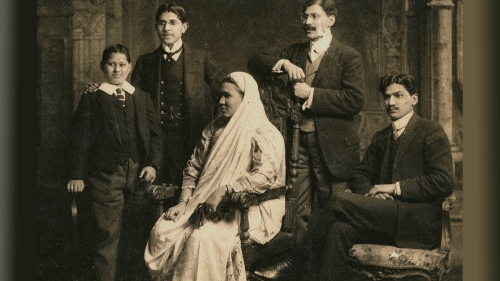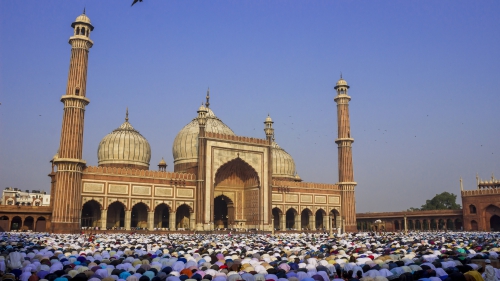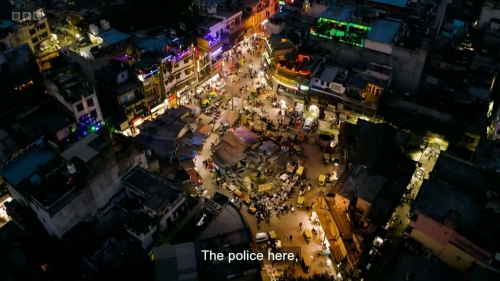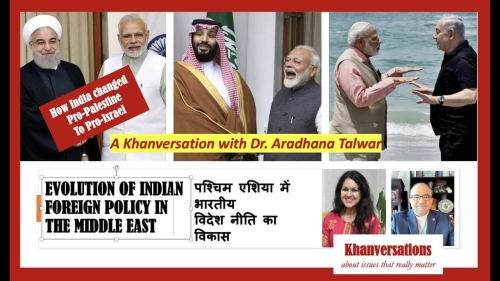Imagine Peace: An Indo-Pak Mirror
The potential for an outbreak of nuclear war between India and Pakistan provides a dramatic backdrop and perhaps a sense of desperate clarity for that conflict, as well as similar conflicts with less potential for mass destruction that are going on all over the globe. Achieving that clarity, however, requires taking a step back from the details of the argument. So imagine for a moment, that you are an artist from a distant and advanced civilization who wants to capture the Indo-Pakistani conflict as a representative expression of the human condition, on a three-dimensional, computer canvas.
As you step back to gain perspective, the first thing that you notice is that people on all sides of the conflict have many similarities, even in day-to-day customs such as their preparation of food and manner of traditional dress. Then you go up in your space ship, for a long-range aerial perspective, and notice that the parties to the conflict are generally grouped along imaginary lines drawn on the same landmass. At this point, you really have to go back to Earth and check details because from what you've seen so far, you can't paint the picture. It doesn't make sense. Where do these beings intend to live, assuming that any of them manage to survive a nuclear holocaust on their shared landmass?
Atmospheric data gathering confirms your previous observations, however. It also adds the fact that the mini-climates in the vicinity of these imaginary-lines contain what these beings describe as a fertile paradise. The delicate environmental balance provides both sustenance and great pleasure. At this point, your observations begin to nudge your sensitive, artistic temperament to the point of a nervous breakdown.
With shaking hands, you pull a bottle of astro-tranquilizers from the medicine chest in the lavatory of your spacecraft and take two tablets. You notice that the bottle is almost empty. It must be time to head home. The sponsors of your planet Earth pictorial project are not going to be happy when you come back empty handed.
It would be child's play for you to brilliantly render terrestrial civilization as malevolent, materialistic, bloodthirsty and insane. The work would be sure to receive wide acclaim. Your sponsors would be proud, jubilant. But that would not be good enough for an artist of your stature, because it would not be true. That may be the way that things appear, but you know that there is more depth that can be portrayed in such a project. But there's an essential truth that you just can't seem to capture.
The tranquilizers begin to take effect: After all you hard, frustrating and dangerous work, you admit failure. You program the navigation computers on your spacecraft for the journey home and retire to the sleep chamber.
Before dozing off, you scan whimsically through the computerized notes you have taken on this last of the many conflicts that you have observed. The section on religion catches your attention. You are reminded of the deep spirituality of beings throughout this landmass and of how religious differences have become a source of conflict. Some of the beings believe in one god with many names but no physical form. Other beings believe in many gods, alternatively described as many physical forms of the one god or many physical representations of the formless god. At this point your head is spinning again, but the tranquilizers kick in. So instead of twisting itself into a splitting headache, your mind simply spirals backward into the astral sleep unit where you quickly lose consciousness.
You awaken from a clear but disturbing dream as the sound system on your spacecraft informs you that you will re-enter your home solar system in just over 72 hours. A flashing light on the communication console indicates that your sponsors have been alerted of your return and want to schedule a teleconference prior to landing to preview the results of your trip. Not wanting to delay the bad news, you reach out to send a response, but stop short as you remember your dream. That's it.
Still perched on the edge of the sleep unit you sketch frantically, almost unconsciously: A man is sitting at one end of a small boat in the midst of a great ocean. A two-way mirror divides the boat in half and obscures the man's vision of the other side. The man is scowling into the mirror and holding up numerous sticks of dynamite with lit fuses in both hands. Evidently the man is scowling so terribly that he cannot recognize himself in the mirror. All he can see is a dangerously unreasonable and heavily armed opponent.
Everyone that the man loves is crowded into the boat on the other side of the mirror. For them, the mirror is transparent, and they are all, with the exception of one small child, yelling and waving desperately to get the man's attention. The child realizes that the agitated cries of unseen loved ones are making the man more determined to defend them, and that the rocking of the boat only makes it harder for the man to recognize his own face in the mirror. The child's determination to find an effective solution is evident in the calm but focused look on his face.
You step back from this sketch sadly, and know that you have at last captured the truth. The beings in your advanced civilization will recognize immediately that the future of terrestrial civilization lies in the mind of that courageous child. Mission accomplished, you turn back to your communication console. But before responding to the waiting message from your sponsors, you glance back at your image of the lone young hero. You tune to a terrestrial communication band, point an antenna toward the Earth and fire off one last message.
Imagine Peace.
Hassaun Ali Ibn Musa Jones-Bey directs the Imagine Peace Project at http://www.imaginepeace.org.
Copyright 1999 Ibn Musa
















